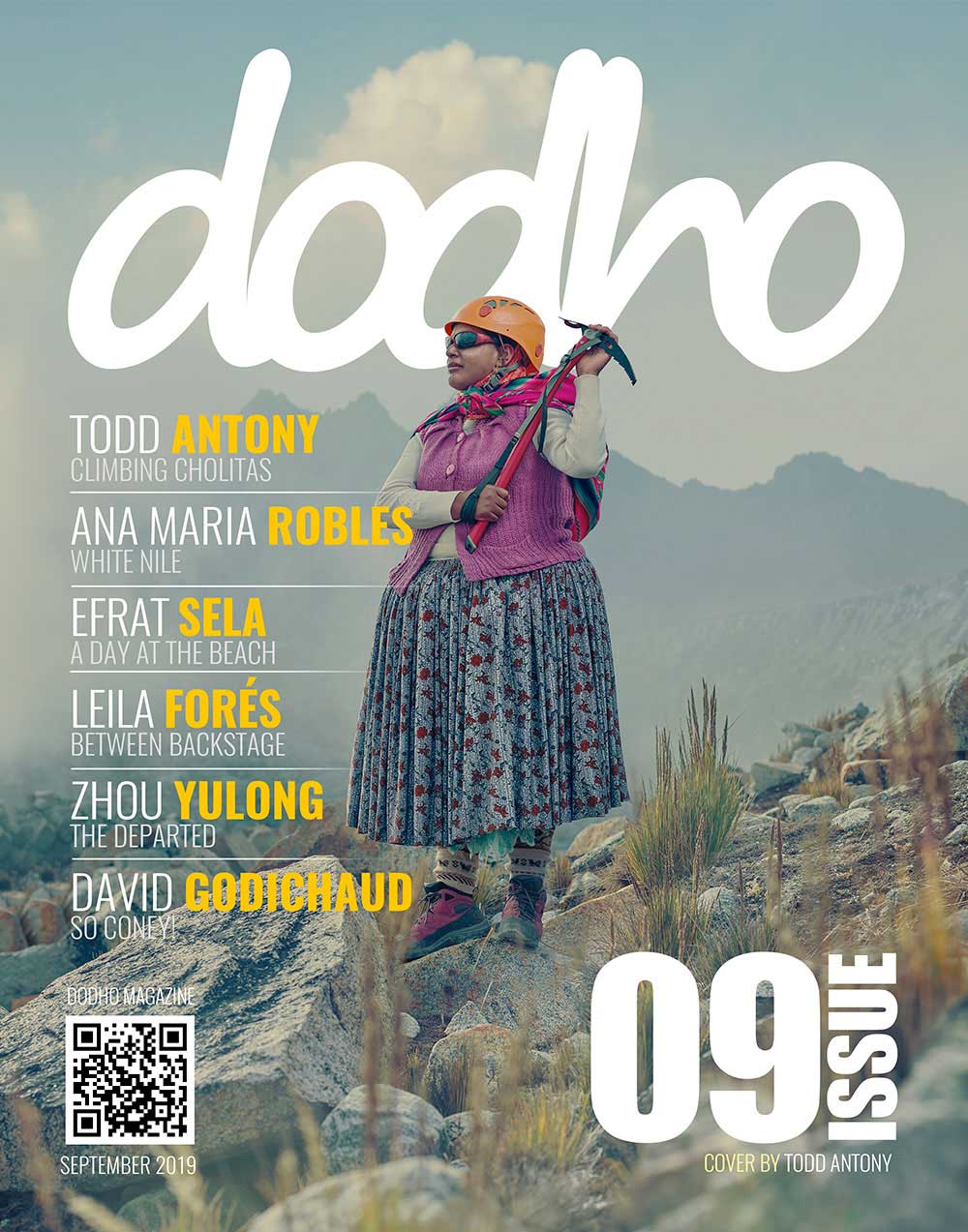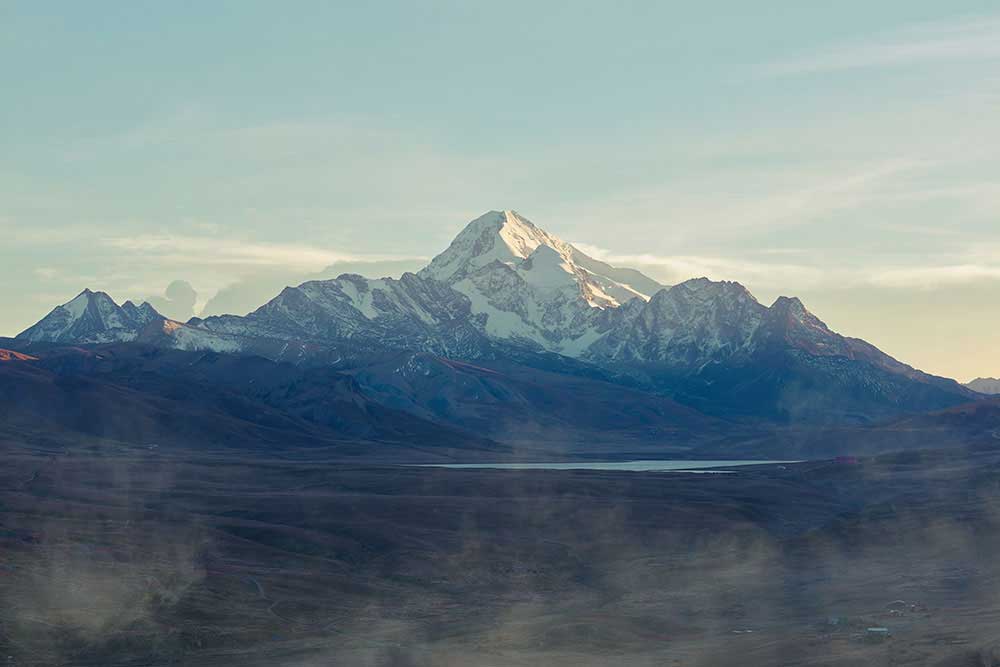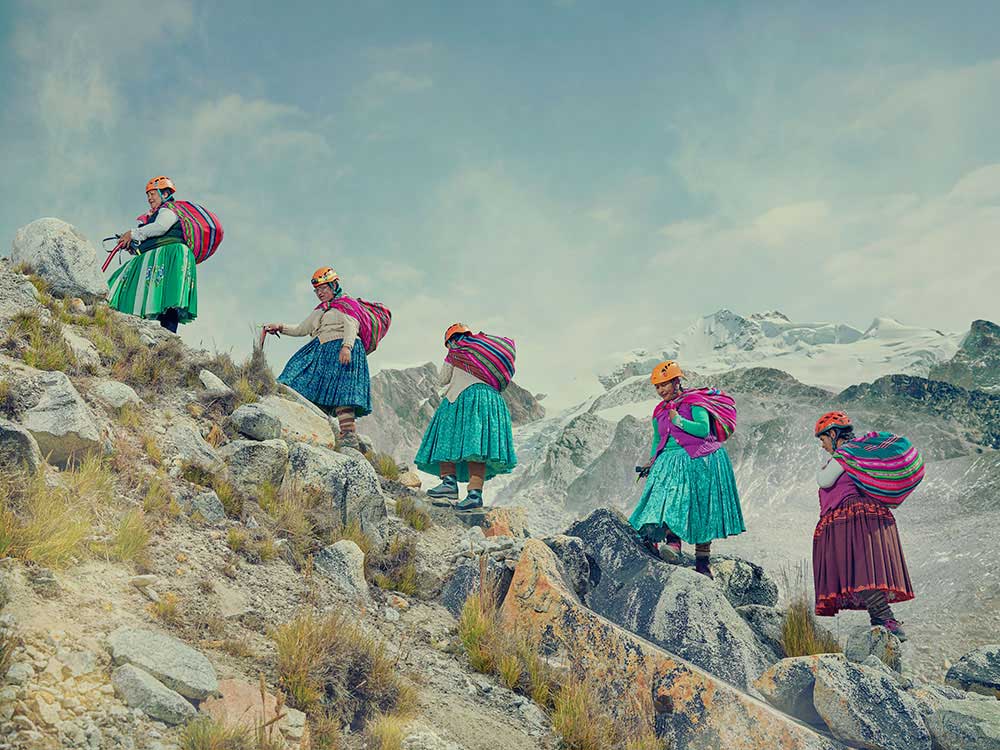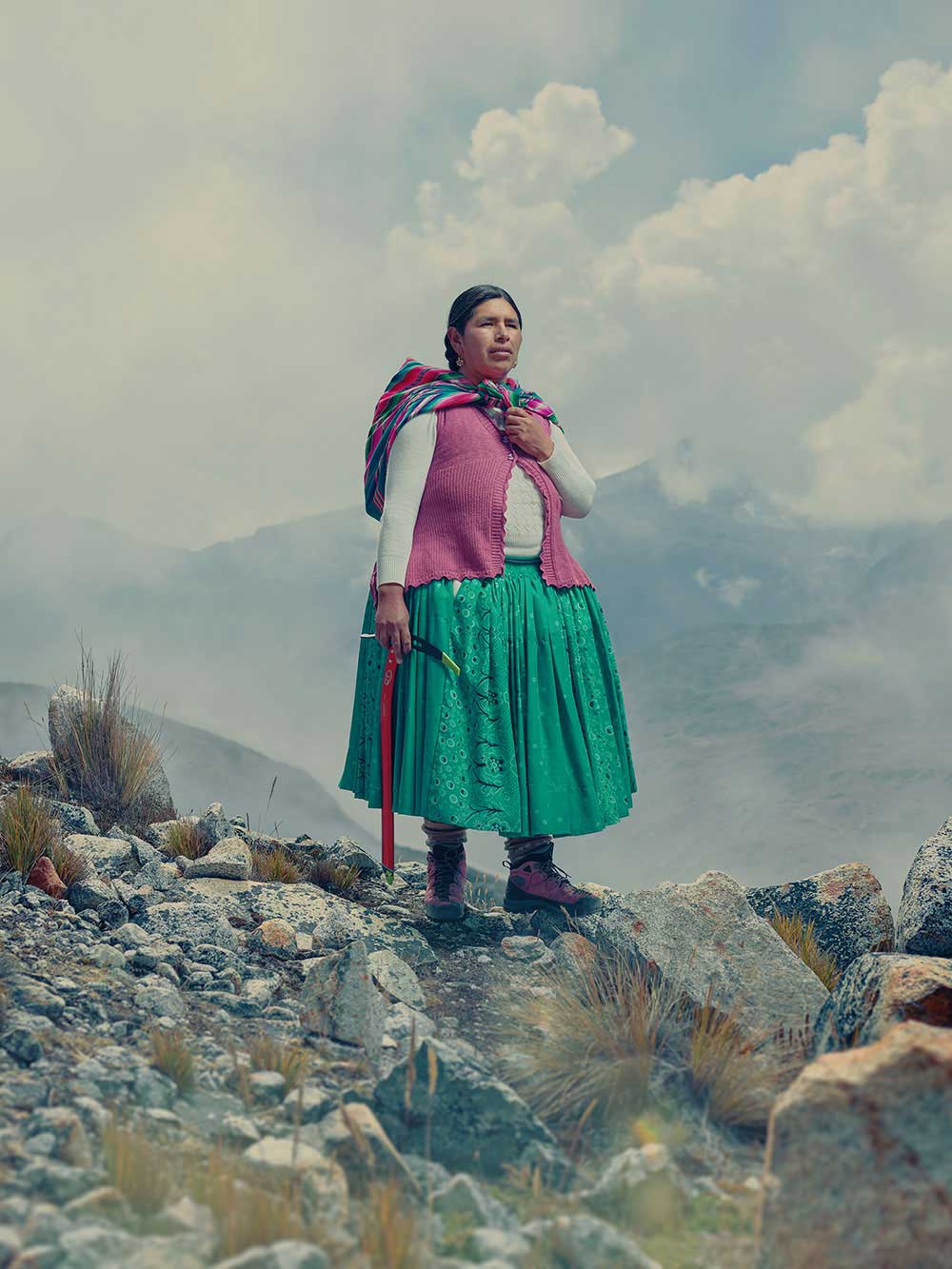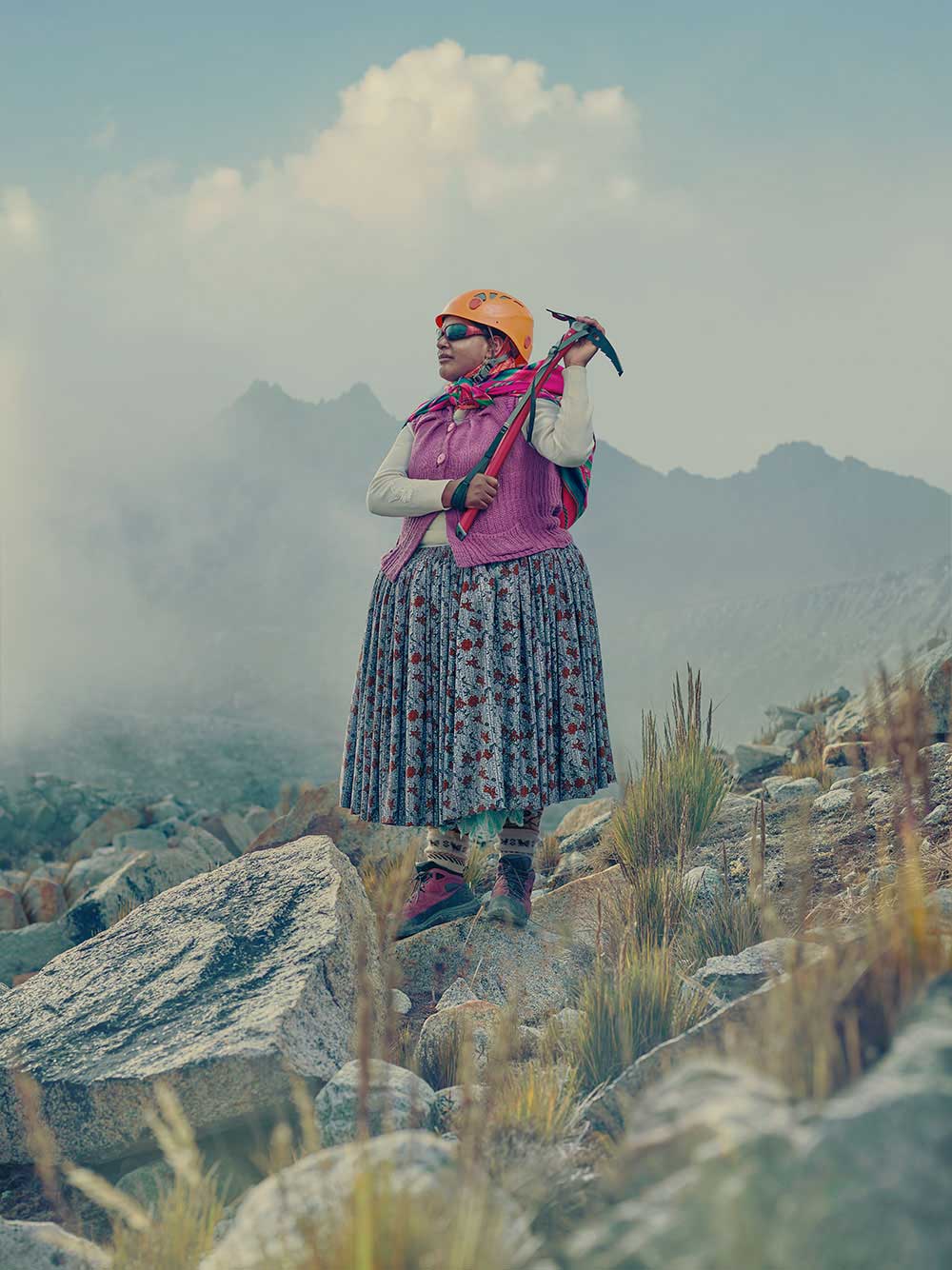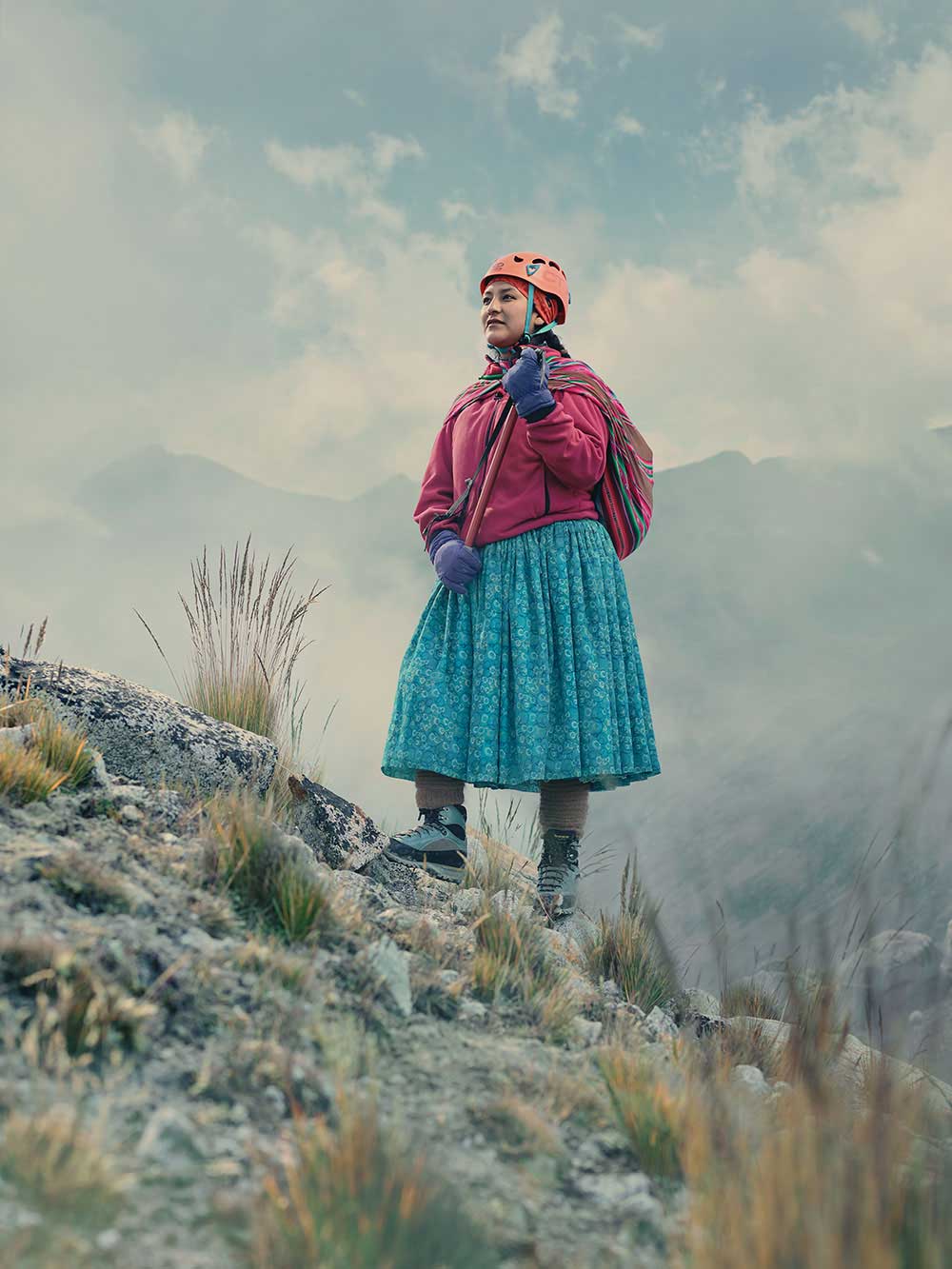 TODD ANTONY SELECTED AND PUBLISHED IN OUR PRINT EDITION 09
TODD ANTONY SELECTED AND PUBLISHED IN OUR PRINT EDITION 09
I´m originally from New Zealand but have been living and working as a photographer in London for the last 15 years. Growing up in NZ, the outdoors is pretty much part of your DNA. It`s coded in there somewhere directly after Rugby. So when I`m out shooting on location I`m at my happiest. If that location happens to be somewhere far flung, and a bit isolated, then all the better.
I`ve always said there`s beach people and mountain people, and I`m most definitely the latter. Don`t get me wrong, I`m very adept at lying on my back on a sandy sun lounger with a beer close to hand. But there`s something about being up a mountain. The sheer scale, and perspective it can give you I find really calming and inspiring.
Commercially, I specialise in advertising photography. But each year I try to undertake 1-2 personal projects to keep myself fresh from a creative standpoint. I get to go out and create work purely the way I want to, answering only to myself.
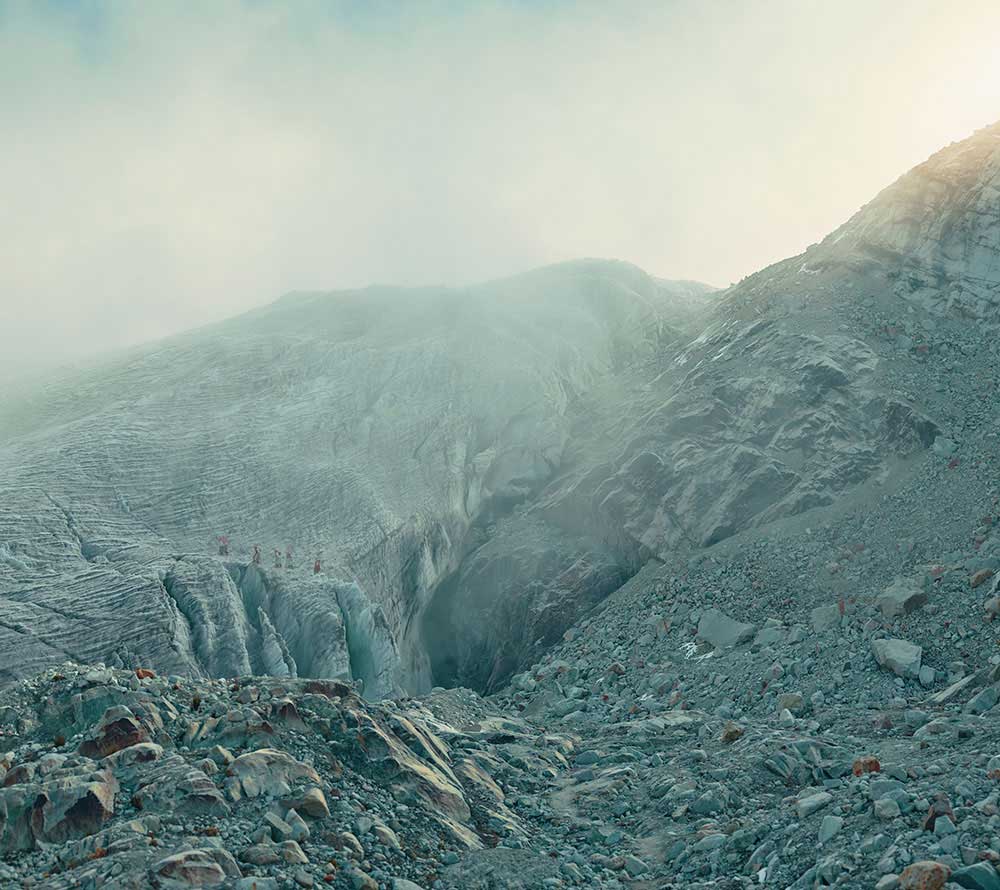
The last 5 or so years these projects have lead me down the path of shooting various subcultures and groups around the world. The lesser known the better. I`m fascinated by these small and compelling groups who have a unique perspective on life and the way they approach it. Aside from being creatively cathartic, shooting these projects helps to land me more ad work, and in turn the ad work helps finance the next project. It`s a perfect little symbiotic relationship. I`ve been to Japan to shoot Dekotora truck drivers, Reindeer racing in Lapland, and most recently to Bolivia to shoot the “Cholitas Escaladoras”. The Climbing Cholitas. A group of Aymara indigenous women who are breaking stereotypes and shifting perceptions.
In January of this year they summited the 22,841ft peak of Mt Aconcagua. The highest mountain outside of Asia. And did so eschewing traditional climbing clothing in favour of their traditional, vibrant, billowing dresses, and using their traditional shawls to carry equipment rather than backpacks.
The word “Cholita”, as these indigenous Aymara women of Bolivia have long been known, is a diminutive of the pejorative Spanish word chola, meaning mixed-race or, pejoratively, “halfbreed”. But these woman have now reclaimed it as a badge of honour. As recently as 10 years ago, Bolivia`s indigenous Aymara women were socially ostracised and systematically marginalised. These women, recognisable by their wide skirts, braided hair and bowler hats, suffered racial discrimination and were banned from using public transport and entering certain public spaces. While these woman have been advocating for their rights since at least the 1960`s, their movement was further invigorated by the 2005 election of Evo Morales.
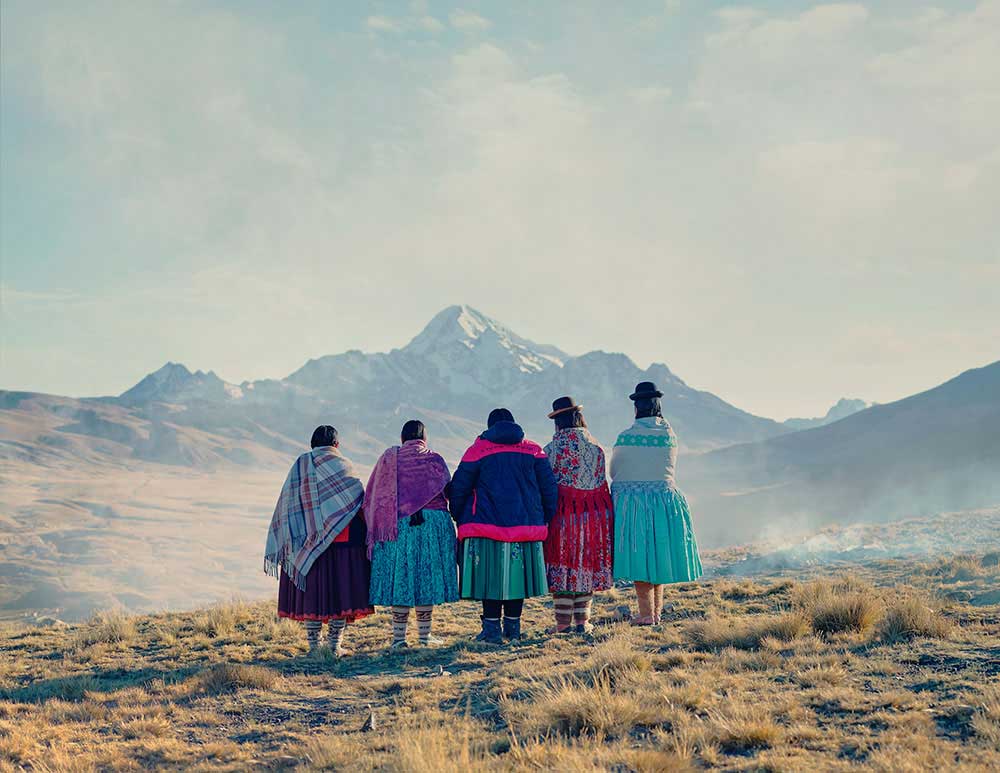
Bolivia`s first Amerindian president. Since then the majority indigenous population have seen greater recognition and autonomy. In 2014, after years of helping mountaineers achieve their summit goals, eleven of these female Aymara porters and cooks strapped on crampons and swapped their high bowler hats for helmets to start climbing peaks themselves, all while wearing their traditional wide, puffy skirts and plaited hair. Though they managed several impressive summits in their four year stint, all in traditional Aymara dress, the women had one main objective all along. Since the beginning, the Cholita climbersgoal was to stand atop Aconcagua. Now, after countless years of portering and cooking, and four years of preparing on lower peaks, five of the Cholita climbers have summited the peak. Lidia Huayllas Estrada, Dora Magueño Machaca, Ana Lía Gonzáles Magueño, Llusco Alaña and Elena Quispe Tincutas successfully scaled Aconcagua in January of 2019. Dora and Ana Lía are mother and daughter, and when talking to them both, Ana Lía said that when they are on the mountain together they are not just mother and daughter, but best friends.
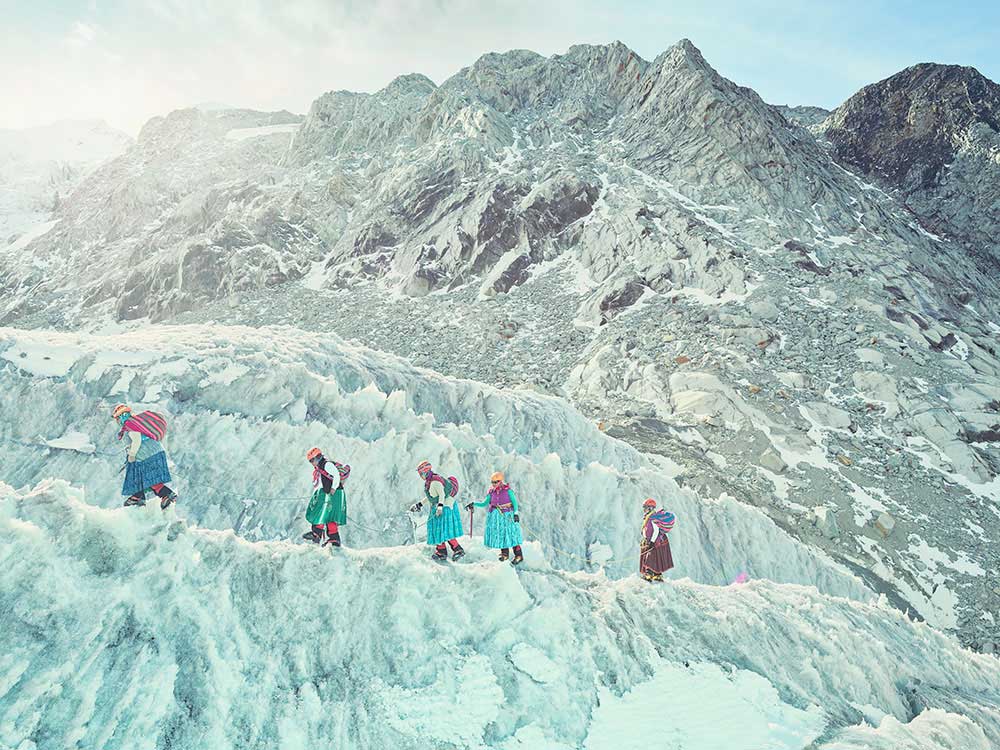
The shoot itself through up some new challenges for me. El Alto in Bolivia sits on a high plateau 1600ft above the city of La Paz. From a distance the city`s densely packed 2 and 3 story brick houses almost look like they are flowing up to the plateaus cliff edge before cascading down its precipitous face like water flowing over a waterfall, down to La Paz below it. In places the houses seemingly defying physics and gravity as they stake their claim on the cliffs face. El Alto, as the name eludes too, sits at an oxygen neglecting 13,615ft in altitude. Our flight rolled into the airport at around 1am and this lack of oxygen becomes very quickly apparent.
Unloading your camera cases off the baggage carousel onto your trolley suddenly becomes a slightly odd experience in that it feels like you`ve broken into a light jog in order to achieve this most Herculean of feats. The next few days are spent in La Paz acclimatising, and nights are spent being impulsively woken up every few hours trying to catch your breath as your body adapts to the lack of altitude.
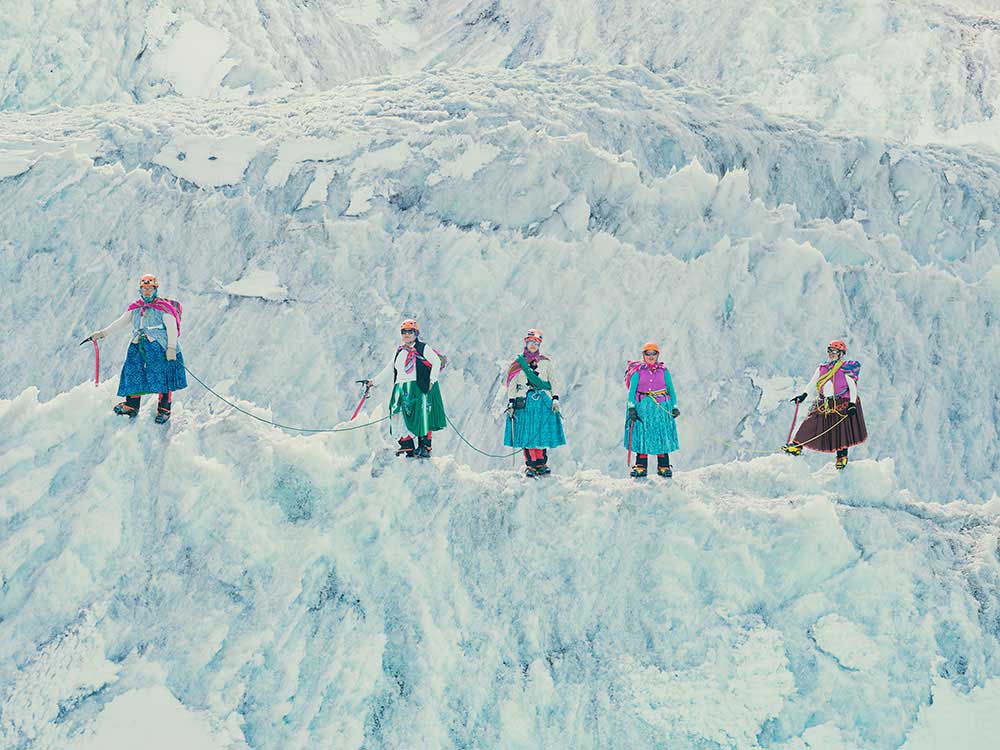
5 days later, in the pre dawn light, we set off for Huayana Potosi mountain (Pronounced “why-na”) along with the climbing Cholitas. As Huayana Potosi comes into full view, just as the first rays of morning light begin to kiss it`s upper slopes, we pull off the road and the Cholitas ask us to join them in a Challa / Pachammama offering ceremony, to afford us safe passage on the mountain over the coming days. With a small fire smouldering, we each offer the Pachammama some Coca leaves, tucking them under a small rock, before pouring some alcohol onto it, and taking a small swig as well. It`s basically local fire water that could likely strip paint if needed. And imbibing it at 6am blows your head off.
When I`m working on projects like this, obviously the photography is the primary reason for being there. But what makes each shoot special, and memorable, and keeps me wanting to find the next subject, is the people. Having the privileged opportunity to spend time with them and get a small glimpse into their unique lives is something absolutely immeasurable, and photography provides me the key to be able to open those doors. During the shoot we had one of the most picturesque lunches ever, as we all sat at foot of Zongo glacier, the summit of Huayana towering above us, and had an Apthapi (communal meal) together. We didn`t all speak the same languages as each other, but in a way the shared experience provides a large part of the conversation. My producers would translate when any of us wanted to ask questions directly, but other times you find yourself able to work out what is being said by picking up the occasional word in conjunction with a tone of voice or a laugh. As humans we have an amazing ability to communicate without necessarily speaking, and I think there`s probably a lesson in that.
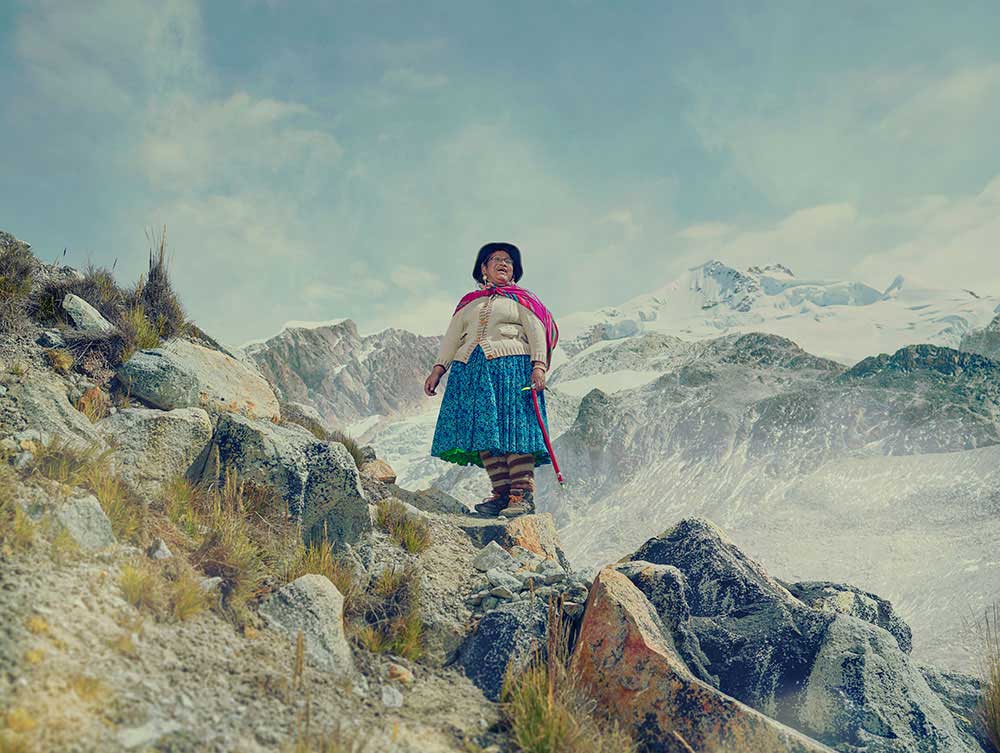
About Todd Antony
Born in New Zealand, based in London and shooting worldwide, Todd Antony is a multi-award winning photographer whose diverse skill set leads to some equally diverse commissions and personal projects. He has been working as a photographer for 16 years and is represented in the UK, U.S. France and Australia. His work has featured in numerous awards, including the AOP Awards, Communication Arts Photo Annual, Creative Review Photo Awards, American Photography Awards, and has been included multiple times in Lurzerʼs Archive ‘200 Best Advertising Photographers Worldwideʼ. His work has been exhibited in London, the USA and France, and his commercial clients include amongst others, Samsung, Sony, Shell, Audi and the BBC. [Official Website]



